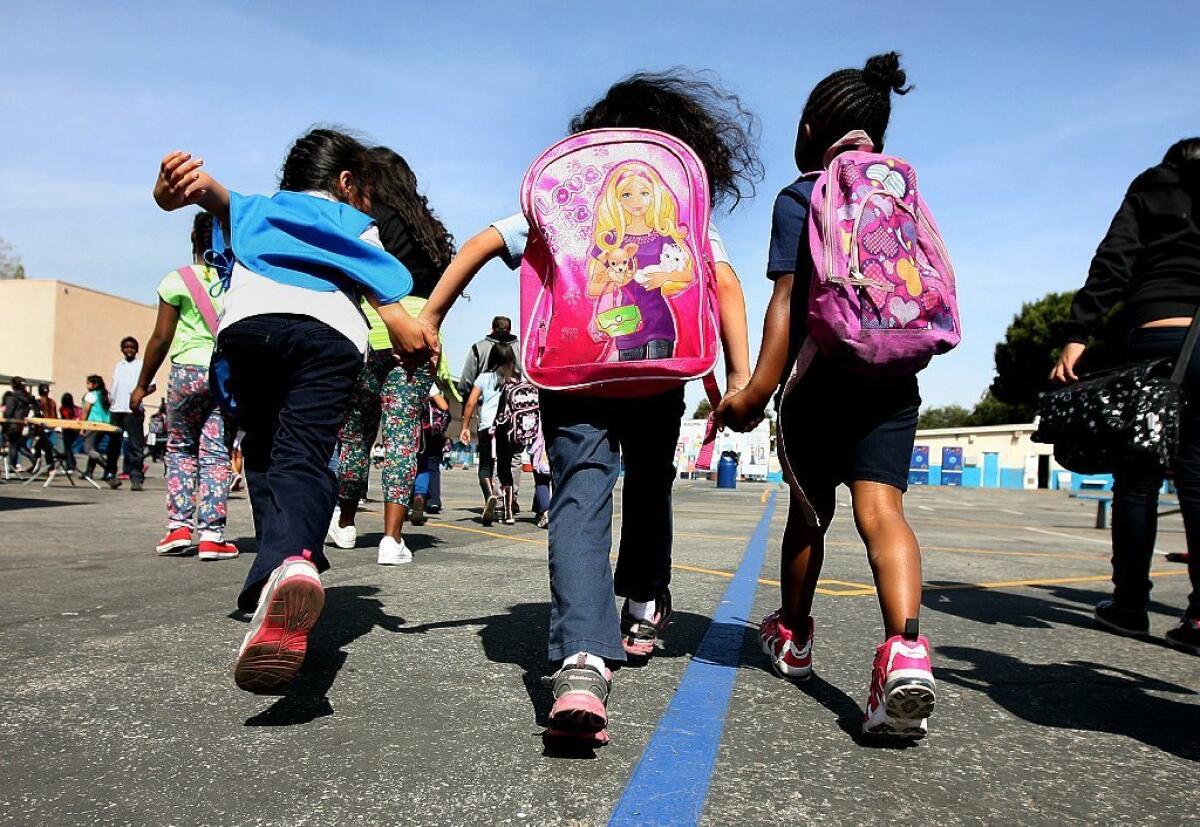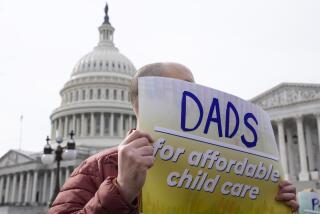Column: How ‚Äėsocial air bags‚Äô for rich kids exacerbate unequal opportunity

What’s the difference between growing up in an affluent family and growing up poor in America?
Yes, upper-middle-class kids have more money. But they also have more attentive parents, stable families, good teachers ‚ÄĒ and even more friends and acquaintances.
As a result, well-off kids have one more advantage, according to Harvard social scientist Robert D. Putnam: They have air bags in their lives.
Social air bags offer the same kind of protection as car air bags: In a collision, you walk away unharmed. When affluent kids stumble, a parent or someone else often jumps in to help ‚ÄĒ by hiring a lawyer, paying for therapy, making sure contraceptives are available or merely finding a tutor.
‚ÄúA lot of poor kids don‚Äôt have any access to help,‚ÄĚ Putnam told me this week. ‚ÄúSome of the stories are heartbreaking.‚ÄĚ
Putnam‚Äôs new book, ‚ÄúOur Kids,‚ÄĚ is a concise and readable collection of current research on inequality in America ‚ÄĒ not income inequality but widening inequality of opportunity among the nation‚Äôs children.
It’s a powerful challenge to the fundamental premise of American society: the comforting myth of a level playing field for talented, hard-working kids no matter their origins. Its strongest passages are not statistics but stories. And often, the key difference is the presence of those air bags: When a kid hits a roadblock, is anyone there to help?
Take a 21-year-old Santa Ana woman whom Putnam calls Lola. Her parents, both drug addicts, deserted her as an infant; she was raised mostly by an older sister, with no parents in the house. Lola was a voracious reader in elementary school, but when she arrived at Santa Ana High School she was misassigned to classes for Spanish speakers and lost an entire year. ‚ÄúThere were kids with guns in the school,‚ÄĚ she told one of Putnam‚Äôs researchers. ‚ÄúThe teachers would even say out loud ‚Ķ that they‚Äôre just there to baby-sit, that they don‚Äôt care if we learn or not.‚ÄĚ Lola is trying to make her way through community college, but the odds are against her.
Some of Putnam’s statistics are equally compelling. Here are just three:
Educational opportunity depends on income more than test scores. ‚ÄúHigh-scoring poor kids are now slightly less likely to get a college degree than low-scoring rich kids,‚ÄĚ Putnam reports. In 2000, 29% of poor kids with high test scores got degrees, compared with 30% of affluent kids with low scores.
The achievement gap among children shows up in tests on the first day of kindergarten, at age 5 ‚ÄĒ and it depends on family income, too. ‚ÄúThe class gap among students entering kindergarten [is] two or times greater than the racial gap,‚ÄĚ Putnam reports.
A 2014 study found that almost two-thirds of affluent children had access to informal mentors outside their families ‚ÄĒ family friends, teachers, coaches, church leaders or counselors; fewer than 40% of poor children reported any mentoring.
Are there solutions? Putnam proposes a list, most of them familiar: more tax breaks for families with children, easier access to contraceptives, universal preschool, programs to allow poor kids to transfer to schools in affluent neighborhoods, ‚Äúcombat pay‚ÄĚ to attract good teachers to troubled schools. And a modest measure that he‚Äôs passionate about: Schools should stop charging kids for participating in athletics and other extracurricular activities.
He‚Äôs been criticized from the left for failing to focus on the economic causes of inequality. (‚ÄúThere must be at least a dozen books on why the income gap has grown,‚ÄĚ he responds.) And he‚Äôs been criticized from the right for proposing more government programs to help fix broken families. (‚ÄúI don‚Äôt think this problem is going to be solved in Washington,‚ÄĚ he‚Äôs concluded. ‚ÄúIt‚Äôs going to be solved in places like Duluth and Galveston and state capitals.‚ÄĚ)
In a debate that often comes down to a search for a single villain ‚ÄĒ either economic change driven by Wall Street or the collapse of the traditional family thanks to libertines of the 1960s ‚ÄĒ he comes down firmly on both sides.
‚ÄúThe first driver was the collapse of the working class economy ‚Ķ and that eroded families,‚ÄĚ he said. ‚ÄúBut the collapse of the family also became an independent cause.‚ÄĚ
But amid that familiar political division, here‚Äôs one last startling statistic: About 95% of Americans agree that ‚Äúeveryone in America should have equal opportunity to get ahead,‚ÄĚ and 86% believe that society should do ‚Äúwhatever is necessary‚ÄĚ to make that promise real. It‚Äôs hard to find any question these days that many Americans agree on.
Some potential Republican candidates for president, including former Florida Gov. Jeb Bush and Sen. Marco Rubio (R-Fla.), have said they want to make equal opportunity, traditionally a Democratic issue, part of their agenda.
They won’t agree with each other, or with their Democratic rivals, on what to do. But they’re right on one count: The problem ought to be at the center of the 2016 presidential campaign.
Twitter: @DoyleMcManus
Follow the Opinion section on Twitter @latimesopinion and Facebook
More to Read
Sign up for Essential California
The most important California stories and recommendations in your inbox every morning.
You may occasionally receive promotional content from the Los Angeles Times.











